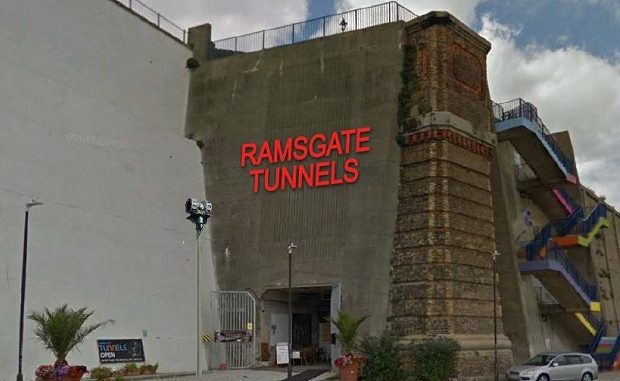
Replica lettering based on the originals will be used for a new Ramsgate Tunnels sign.
The original letters are still stored at the Tunnels after being rescued from a decades old pile of rubbish.
Now the largest and only known Civilian Deep Shelter Air Raid Precaution scheme authorised by Central Government is likely to get a fresh sign following a planning application submitted to Thanet council.
The lettering will go in the same place as the original sign, which said Tunnel Railway. The first sign was in place from 1936 to 1957, when the Tunnel entrance facade collapsed and was rebuilt to the current format.
It was reopened in 1958 with the sign in place, until the Tunnel closed at the end of Summer in 1965 and the lettering was removed.
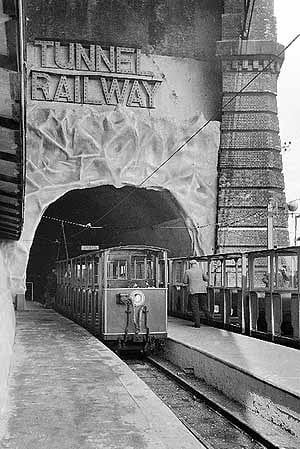
The new sign, which will say Ramsgate Tunnels, will be hung in the same location where the old bolts can still be seen.
There are also plans to install an original air raid siren at the entrance of the Marina Esplanade site.

Tunnels volunteer Max Streatfield said: “Many visitors comment on how they struggle to find our location because of poor signage, so we hope this will solve that problem.
“We have had a very successful Summer Season and have many exciting events planned for the run up to Christmas -including the return of The Beverly Big Band.”
Since last year’s formation of a new board and a move to charitable trust status, plans have been formed to bring even more variety to Ramsgate’s historic gem.
Themed parties are available, which can include full tours or adapted mini tours, and there have been concerts, fairs and the opening of the new Tunnels museum and Tunnel Teas cafe.
In November there will be a series of special blackout tours and in December there will be the chance to here the tale of two wartime Ramsgate youngsters in Children’s Christmas in the Tunnels tours.
Find more details at ramsgatetunnels.org
Potted Tunnels history
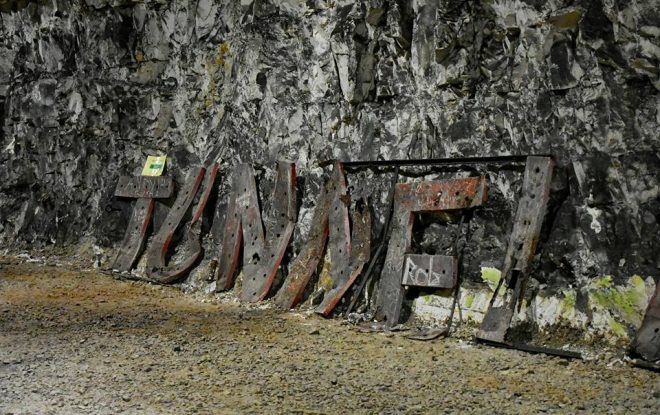
The Ramsgate Tunnels network is the largest and only known Civilian Deep Shelter Air Raid Precaution scheme authorised by Central Government.
The railway tunnel is almost one mile long and was opened in 1863 to bring the London Chatham & Dover Railway to the Ramsgate Harbour station, adjacent to Ramsgate Sands.
The line was abandoned in 1926 and Ramsgate Town Station was built in its current location.
In 1936 a ‘mini railway’ was opened at the site by the Ramsgate Olympia company. The line linked Dumpton to the beach and Merrie England amusements. An illuminated tableaux of world scenes gave rise to the name The World Scenic Railway.
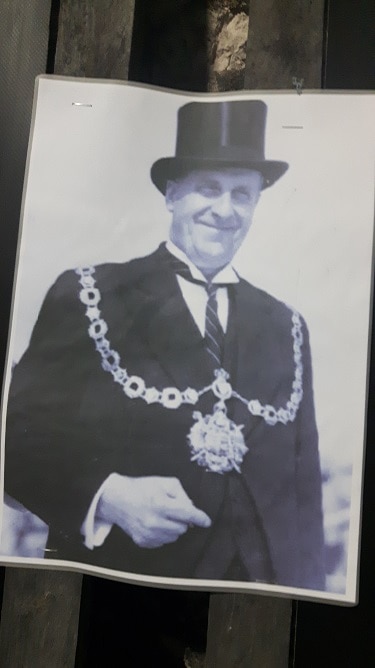
As war approached Ramsgate Borough Council embarked on an ambitious plan to create a network of Deep Shelter Tunnels linking to the former railway tunnel. Despite initial resistance from government Mr ABC Kemp (pictured) ‘the top hat mayor’ and the borough surveyor ceaselessly pressed for funding of the tunnels before the war, thus saving countless lives.
The plan was finally given the go ahead and the network, 2.5 miles long and 60ft below the town, was formally opened by The Duke of Kent on 1st June 1939.
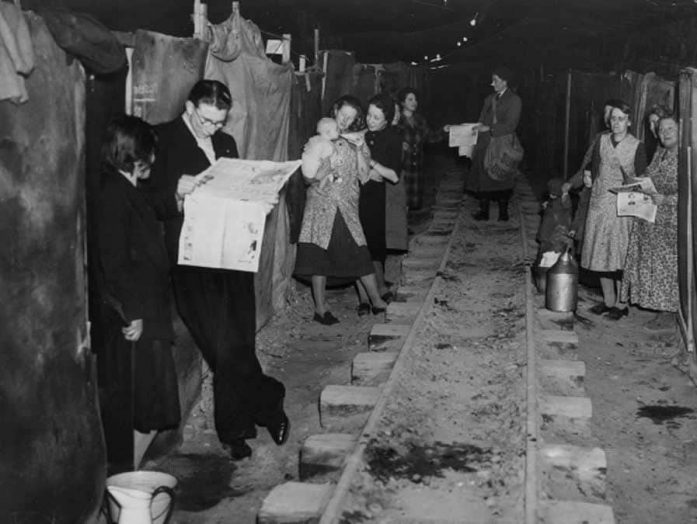
According to documents from the time shared by Kent History Forum the estimated cost of creating the shelter was £49,700, or £19,520 per mile, which includes entrances. The number of persons who could be accommodated was estimated to be approximately 11,000; 15,000 could be accommodated in the existing caves and the old railway tunnel, so that the total of 26,000 persons would be accommodated in the whole scheme.
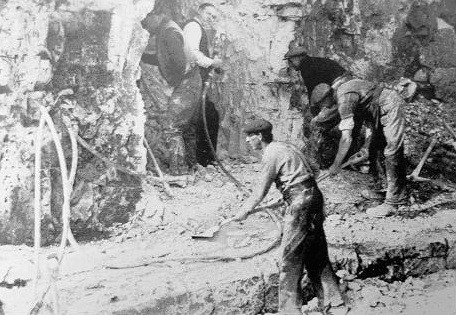
There were originally around 12 entrances, some of which were on the esplanade, cut directly into the cliffs, and others emerging in squares, playgrounds and parks around Ramsgate. This meant that during an air raid, people could quickly enter the tunnels via their nearest entrance
The tunnel system became famous and was visited by many celebrities including then Prime Minister Winston Churchill who was forced to take refuge there himself when caught in a raid.
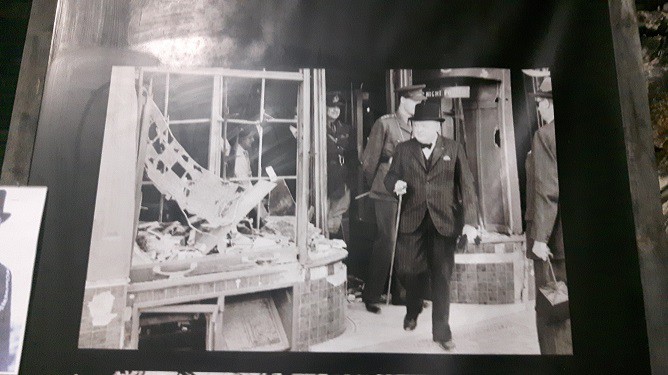
A German air raid in August 1940 dropped 500 bombs on the town. Some 29 people died and more than 1,000 were left homeless, many then moved permanently into the tunnels – creating Tunnel Town – until the end of the war.
The tunnels were sealed up after the war but the railway line was cleared and the Scenic Railway began to run again in 1946.
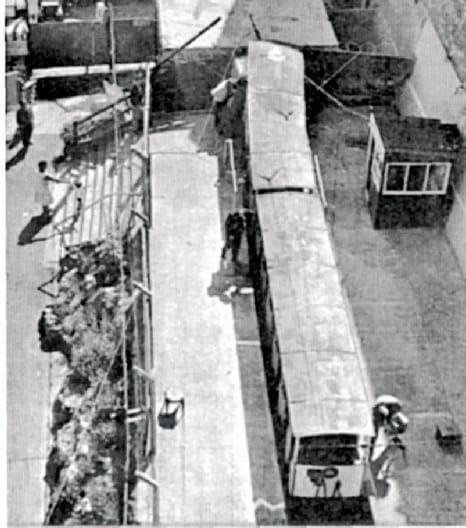
In 1965 a train overran the track at the seafront terminal. The Tunnel Railway was closed and the site abandoned once more.
The site was reopened in May 2014 by the current Duke of Kent following the successful bid by The Ramsgate Tunnels Project, supported by Ramsgate Town Council, for £53,000 from the Peoples’ Millions, a Heritage Lottery Fund grant for £84k won by Ramsgate Regeneration Heritage Trust and £51k from Thanet council.

